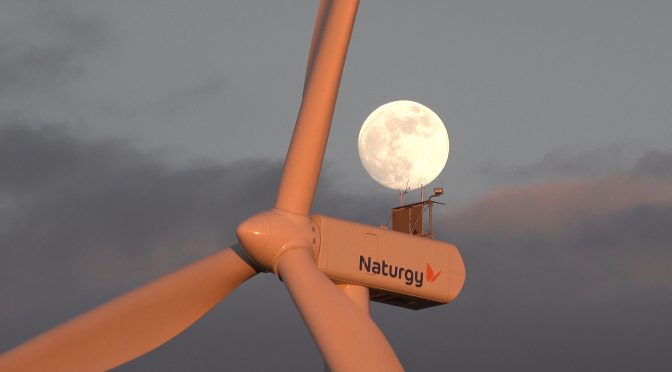The energy company already exceeds 780 MW of wind power in Castilla y León.
The Valladolid project, with an installed capacity of 35.2 MW, will produce more than 100 GWh of energy annually, which is equivalent to the annual consumption of 29,100 homes.
This wind energy facility will displace other sources of conventional electricity generation and will contribute to reducing polluting and greenhouse gas emissions by more than 64,600 tons per year.
Naturgy has put the Torozos II wind farm into operation, the second that the energy multinational has in Castromonte (Valladolid). With an installed capacity of 35.20 MW, the project has involved an investment of more than 39 million euros.
The park is made up of 16 wind turbines and it is expected that the annual energy production will be around 101.5 GWh per year, equivalent to the annual electricity consumption of more than 29,100 homes, almost half of those in provinces such as Ávila, Palencia or Segovia.
The start-up of the Torozos II wind farm makes it possible to displace the use of other sources of conventional electricity generation, helping to reduce polluting and greenhouse gas emissions by more than 64,600 tons per year, or what is the same, close to one million tons throughout its useful life.
The activity of this installation will also contribute to boosting the local economy, through fiscal contributions to the municipality (tax on Constructions, Installations and Works (ICIO), Economic Activities (IAE) and Real Estate with Special Characteristics (BICES), in addition to the rustic canon), and the rents to the owners of the land that the park occupies during the next 30 years.
The construction, operation and maintenance of the park has generated more than 460 direct and indirect jobs.
More than 780 MW of installed power in Castilla y León
With the entry into operation of Torozos II, Naturgy already exceeds 780 MW of installed renewable power in the Community, distributed in 24 wind farms, 9 hydroelectric plants and 1 photovoltaic plant.
In 2021, the company generated 1,565 GWh of renewable energy in Castilla y León, equivalent to the annual electricity consumption of more than 448,000 homes, or what is the same, double the homes in the province of Valladolid.
Thanks to the energy produced last year, it was possible to displace the use of other sources of conventional electricity generation, helping to reduce polluting and greenhouse gas emissions by 896,000 tons. These reduced emissions are equivalent to removing 373,000 cars from circulation in one year.
The 7 wind farms located in the province of Valladolid were the ones that generated the most energy in 2021. In total, Mirabel, San Blas, Teso Pardo, Torozos A, B and C, and Carratorres produced more than 680 GWh. These seven infrastructures prevented more than 389,000 tons of greenhouse gases from entering the atmosphere and created energy equivalent to the annual electricity consumption of more than 195,000 homes.
Commitment to the energy transition
In 2021, Naturgy presented its new 2021-2025 Strategic Plan, with which the company is promoting its role in the energy transition and decarbonisation, with the ambitious goal of achieving emission neutrality by 2050 and an installed capacity of renewable sources close to at 60%.
The company plans to invest 14,000 million euros during the term of the Plan, of which approximately two thirds will be dedicated to promoting renewable generation, to go from the current 5.2 GW in operation to the more than 14 GW planned to be operational in December 2025.
These investments confirm the company’s strategic shift towards a more sustainable energy mix and its commitment to the energy transition. All this, without abandoning the fundamental objectives of creating value and growth for each of the businesses, as well as the objectives in terms of ESG.
In the environmental field, the company continues with its policy of increasing emission-free production (9.3% more during 2021). Likewise, last year it significantly reduced Greenhouse Gas (GHG) emissions, 12.9% less than in 2020, as a result of the new installed renewable capacity and the closure of coal-fired generation plants.


